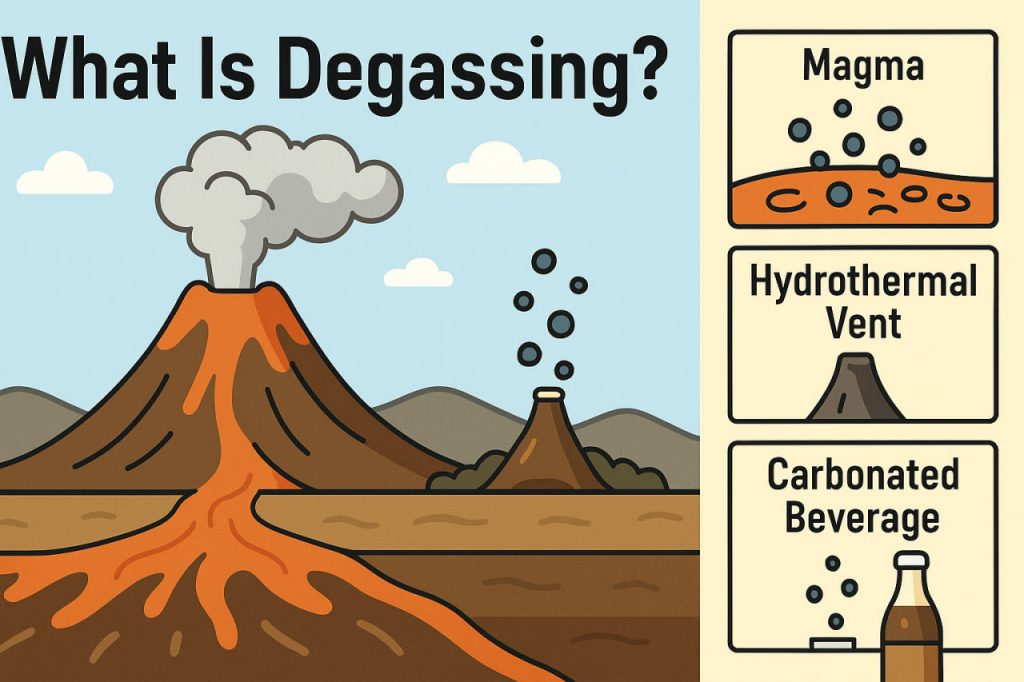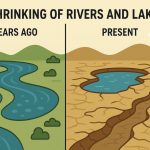Degassing is the process of releasing gases from within a substance, system, or the Earth itself. It can occur naturally in geological environments, such as volcanoes, or artificially in industrial and laboratory settings. Degassing plays a critical role in shaping Earth’s atmosphere and influencing environmental processes.
Degassing in Geology
In geology, degassing refers to the escape of volcanic gases like water vapor, carbon dioxide, and sulfur dioxide from magma. As magma rises toward the surface, pressure decreases, and dissolved gases are released. This is a major factor driving volcanic eruptions and shaping landscapes.
Degassing of the Earth’s Interior
Over billions of years, Earth has undergone large-scale planetary degassing, releasing gases from its mantle and crust into the atmosphere. This process helped form the early atmosphere and oceans, making Earth habitable. Even today, continuous degassing occurs through mid-ocean ridges, hydrothermal vents, and fault zones.
Industrial and Technical Degassing
In industry, degassing is used to remove unwanted gases from liquids or solids. For example, metals are degassed to eliminate bubbles that weaken their structure. In water treatment, degassing removes dissolved oxygen or carbon dioxide to prevent corrosion. Vacuum degassing is common in chemical and food production.
Environmental Importance
Volcanic degassing releases large amounts of greenhouse gases, such as CO₂, which influence climate over long timescales. However, compared to human emissions, natural volcanic CO₂ is relatively small. Monitoring degassing helps scientists forecast volcanic activity and assess environmental impacts.
Degassing in Everyday Life
Degassing is also something we observe daily. When you open a bottle of soda, dissolved carbon dioxide escapes as bubbles — a small-scale example of degassing. Similar processes occur in nature on a massive scale.
Conclusion
Degassing is a fundamental process, from shaping Earth’s atmosphere to driving volcanic eruptions and supporting industrial applications. Whether natural or artificial, it highlights the constant movement of gases within and around our planet.
Glossary
- Degassing – the release of gases from a solid, liquid, or geological source.
- Volcanic gases – gases such as H₂O, CO₂, and SO₂ released during eruptions.
- Planetary degassing – the release of gases from Earth’s mantle and crust over geological time.
- Vacuum degassing – industrial process of removing gases under low pressure.
- Hydrothermal vent – underwater fissure releasing heated gases and fluids.
- Greenhouse gases – gases that trap heat in Earth’s atmosphere.


